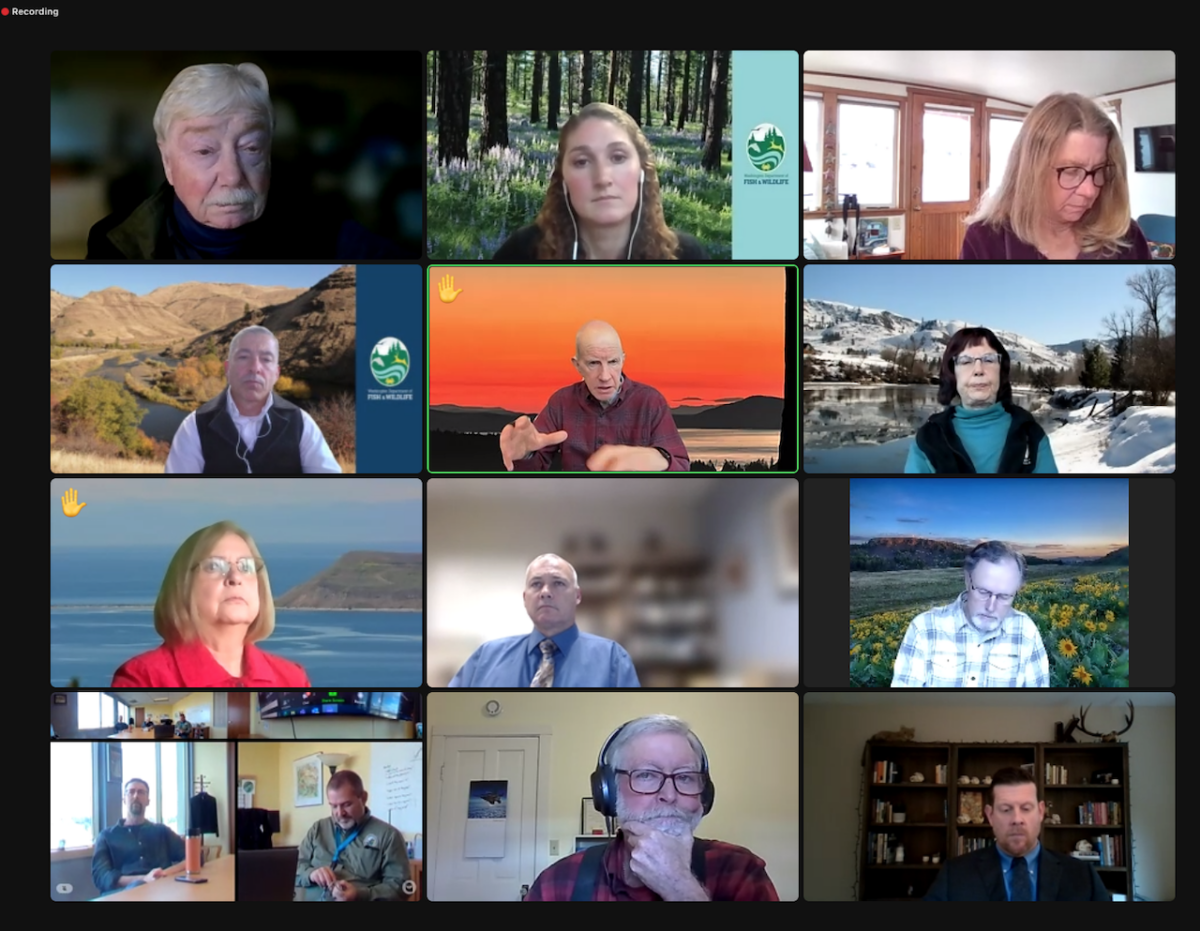
WDFW Talks Bears, Cougars With Commission
A WDFW carnivore science panel fleshed out detailed information on Washington’s bear and cougar population, research, management and the response, if any, to recent hunting regulation changes for the Fish and Wildlife Commission this morning.

The four-hour confab essentially covered two bases at once, addressing a recent petition asking the commission to more than reverse those 2019 and 2020 rule tweaks in a vote later this month and laid the groundwork for further discussions next year around policies and management of the species as they pertain to the updating of the statewide Game Management Plan.
WDFW’s Drs. Brian Kertson and Lindsay Welfelt provided biology lessons on cougars and bears, respectively, detailed the frameworks for how they are managed by WDFW and talked about interesting recent and ongoing research across Washington.
While the aforementioned petition claims the rule changes “significantly” impacted bear and cougar numbers, Kertson, Welfelt and agency managers indicated the populations are stable at the statewide level, with only limited areas of concern around harvest.
Dr. Donny Martorello, WDFW’s chief wildlife scientist, said that before today’s meeting, staff had talked about whether the cougar changes – which included increasing the harvest guideline in 19 population management units, or PMUs, and only counting adult cats in that while staying inside a 12 to 16 percent impact rate, for lack of a better phrase – had been detrimental to the population in terms of maintaining its stability and territoriality and said that they did not have any data or science showing them that. Kertson said that that 16 percent top end hadn’t been exceeded in recent years outside of 2018, which was pre-rule change.
Martorello also said they looked at data a couple years on either side of the bear rule change – extending the season to a uniform mid-November end and allowing two to be harvested in Eastern Washington – and didn’t see a cause and effect impact with those.
It all functioned to add muscle to WDFW’s reasoning in recommending to deny the petition.
Commissioners had a number of questions, including the reliability of density and abundance estimates, agency confidence about whether bears and cougars are being overharvested or not, and harvest data reliability, given poor 54 percent hunter reporting and 25 percent tooth submission rates.
Commissioner Lorna Smith sought to draw a cause and effect between increased cougar hunting in Northeast and a younger cat population causing more conflict there, but Kertson said it was a lot more complicated than that and that there wasn’t a lot of evidence to support her “troubled teen hypothesis.” She contended that the bear data had a lot of holes, and asked if it couldn’t also be true that the population was decreasing “in ways that we haven’t determined.”
Commissioner Tim Ragen, always interested in having more data, worried about hypothesizing their way through wildlife management.
Commissioner Woody Myers asked if cougars are managed at the statewide level, to which the answer is WDFW’s PMU scale, which includes stand-alone game management units and groups of adjacent GMUs lumped together.
Commissioner Steven Parker, channelling Chair Barbara Baker, observed that it can be frustrating not to have sharp, clear answers from staff when the commission needs to provide definitive statements on matters. The retired fisheries biologist said if he couldn’t understand it, the public couldn’t be expected to.
Commissioners also inquired whether hunters’ contention that fewer days needed to harvest bears – so-called catch per unit effort – suggests a growing bruin population in recent years, but Welfelt didn’t put a lot of faith in that as a measure because of how regulations and forage conditions can play a role in take.
She also shared how new bear density estimates show fewer bears in Southwest Washington’s Willapa Hills – an average of 8 per 100 square kilometers – than previously estimated, and that highest densities – from 31 to 35 bears/100km – are seen in Northeast Washington, the Blue Mountains (both former spring bear permit hunting zones) and the western Olympic Peninsula.
She pointed out bear harvest was skewed towards males and that very few cubs are shot; WDFW uses sex and age harvest data to increase, decrease or hold take steady. Kertson noted the overall 12-16 percent cougar guideline was based on females but that males could withstand a somewhat higher rate.
They both also pushed back on claims that bear and cougar populations are sharply rising overall. They indicated numbers were generally stable with some increases here and declines there. Kertson pointed out that in a state of 8 million and with next to everybody owning a trail cam and documenting cougars on the landscape there could be a bit of confirmation bias going on.
Their presentations also shared how the range of both species is strongly tied to forested areas, with cats also heavily dependent on ungulates. Slides illustrated the relatively longer range dispersal of toms across the Cascades and shorter range ones of boars, as well as overlapping territories of females.
The meeting was attended by all nine commissioners, although Vice Chair Molly Linville had to leave early to deal with a situation on her lower Moses Coulee ranch. All in all, it was a fascinating four hours on the state of the state’s bruins and big cats, and the ongoing science and policy discussions around them.
WDFW’s presentations can be found here and the meeting was carried on TVW.

